Low Carbon Scheduling Optimization of Flexible Integrated Energy System Considering CVaR and Energy Efficiency
Abstract
:1. Introduction
1.1. Background and Motivation
1.2. Literature Review
1.3. Contributions and Organization
2. Description of Operation Mechanism of FIES
3. Low Carbon Scheduling Model Construction and Energy Efficiency Analysis of FIES
3.1. Objective Function
3.2. Stochastic Optimization Reformulation Considering CVaR
3.3. FIES Components and Constraints
- Cooling balance:
- Thermal balance:
- Electricity balance:
3.4. Energy Efficiency Analysis
4. Solving Methodology
4.1. FCM-CCQ Method
4.2. Overall Solution of the Model
5. Case Study
5.1. Parameter Setting
5.2. Scenario Setting
5.3. Result Analysis
5.3.1. Clustering Analysis
5.3.2. Basic Analysis of System Energy Supply
5.3.3. Analysis of Purchasing and Selling Behavior
5.3.4. Analysis of Battery Operation Results
5.3.5. Analysis of Economic, Environmental Benefits, and Energy Efficiency of the CTED Model
5.3.6. Sensitivity Analysis
6. Conclusions
- Apart from the operation mode of IES in other research, the IES after transformation is in good operation condition as a whole, and the cold, hot, and electric loads are satisfied, which ensures the reliability of the energy supply of the system. At the same time, heat storage, electricity storage, and cold storage equipment are charged/discharged at appropriate times, which further improves the flexibility of the overall operation of the system and reflects the principles of economical, reliable, and safe operation of IES.
- Meanwhile, the system is optimized from the perspective of carbon emission and the environmental benefit of system operation can be improved after flexible transformation. Based on the analysis of carbon emission penalty price mechanism, the conclusion is that CO2 emission will decrease with the increase of penalty price coefficient but, when it reaches the critical value, it cannot be further reduced due to the constraint of energy supply demand.
- In terms of energy-use efficiency of the system, compared with the original IES in other research, the flexible comprehensive energy system can integrally improve the energy-use efficiency and strengthen the rationality of the use of limited resources.
- Compared with the traditional clustering method, the FCM-CCQ algorithm presented in this paper can better explain the number selection of clustering centers and the clustering analysis process is more scientific and logical.
- The stochastic optimization method considering CVaR is adopted to fully consider the risk existing in the system operation process, which previous studies did not take account into. Risk management selects the corresponding weighting factor λ according to the decision maker’s different degrees of risk preference, so the corresponding scheduling optimization strategy is adopted pertinently.
Author Contributions
Funding
Conflicts of Interest
Appendix A

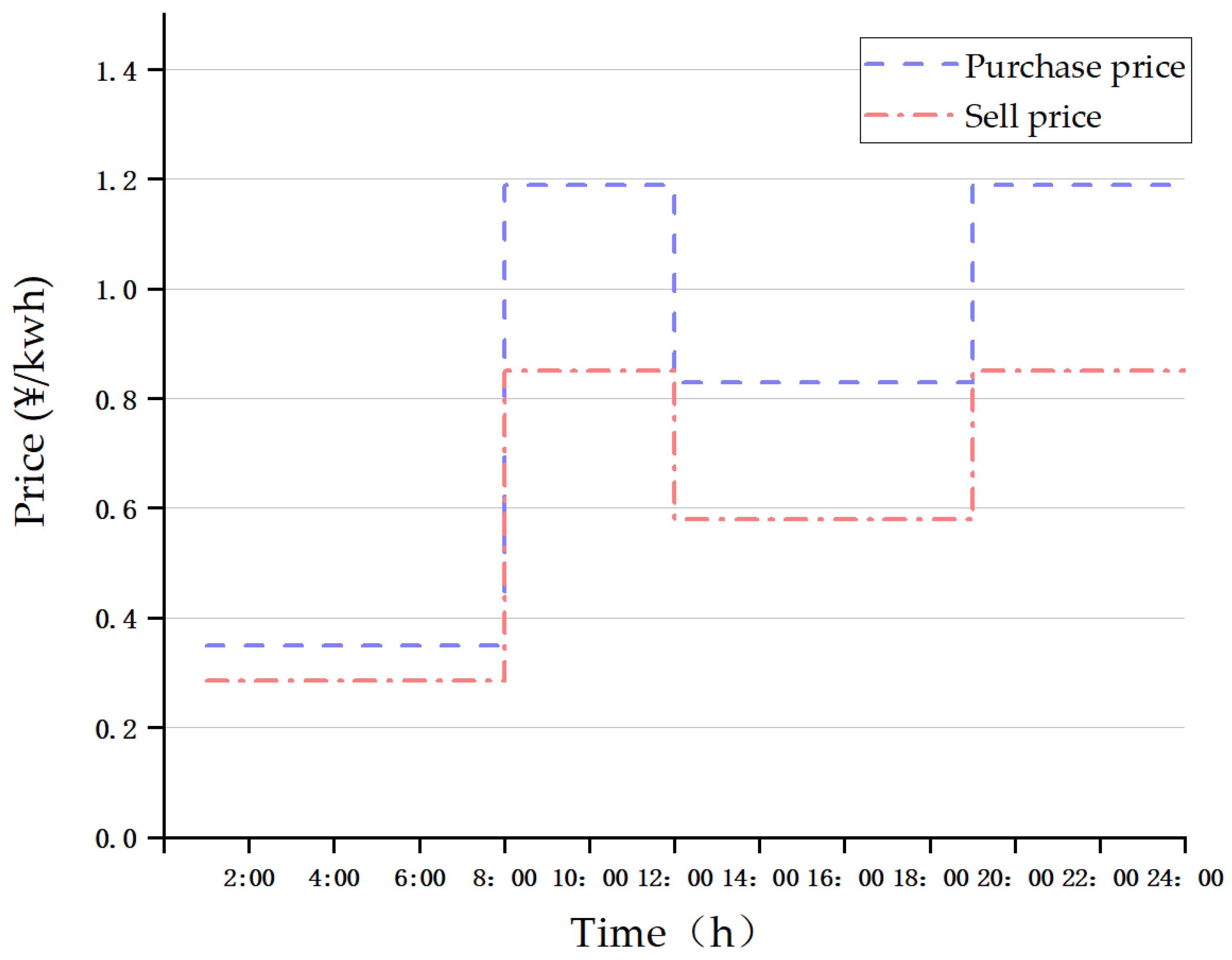
| System Element | Pmin(kw) | Pmax(kw) | Ramp Rate (kw/h) | Maintenance Cost (¥/kwh) | Energy Conversion Efficiency |
|---|---|---|---|---|---|
| Gas turbine | 30 | 200 | 60 | 0.1685 | 0.8 |
| Heat exchanger | 0 | 600 | — | 0.08 | 0.85 |
| Gas boiler | 0 | 500 | — | 0.02 | 0.73 |
| Wind power | 0 | 150 | — | 0.11 | 0.95 |
| Photovoltaic power | 0 | 120 | — | 0.08 | 0.95 |
| Electric chiller | 0 | 13 | — | 0.03 | 4 |
| Heating coil | 0 | 10 | — | 0.06 | 0.88 |
| Energy Storing Device | Initial Energy Storage (kwh) | Rated Energy Capacity (kwh) | Discharge/Charge Efficiency | PCmax (kw) | PDmax (kw) | Self-Discharge Rate | Maintenance Cost (¥/kwh) |
|---|---|---|---|---|---|---|---|
| Battery | 5 | 20 | 0.95 | 5 | 10 | 0.05 | 0.02 |
| Thermal storage tank | 16 | 160 | 0.95 | 80 | 80 | 0.0.5 | 0.015 |
| Cooling storage tank | 10 | 100 | 0.95 | 80 | 80 | 0.0.5 | 0.015 |
References
- Simionescu, M.; Bilan, Y.; Gędek, S.; Streimikiene, D. The Effects of Greenhouse Gas Emissions on Cereal Production in the European Union. Sustainability 2019, 11, 3433. [Google Scholar] [CrossRef]
- Hnatyshyn, M. Decomposition analysis of the impact of economic growth on ammonia and nitrogen oxides emissions in the European Union. J. Int. Stud. 2018, 11, 201–209. [Google Scholar] [CrossRef] [Green Version]
- Kharlamova, G.; Nate, S.; Chernyak, O. Renewable energy and security for Ukraine: Challenge or smart way. J. Int. Stud. 2016, 9, 88–115. [Google Scholar] [CrossRef] [PubMed]
- Kasperowicz, R.; Pinczyński, M.; Khabdullin, A. Modeling the power of renewable energy sources in the context of classical electricity system transformation. Int. Stud. 2017, 10, 264–272. [Google Scholar] [CrossRef]
- Shindina, T.; Streimikis, J.; Sukhareva, Y.; Nawrot, Ł. Social and Economic Properties of the Energy Markets. Econ. Sociol. 2018, 11, 334–344. [Google Scholar] [CrossRef]
- Lv, C.; Yu, H.; Li, P.; Wang, C.; Xu, X.; Li, S.; Wu, J. Model predictive control based robust scheduling of community integrated energy system with operational flexibility. Appl. Energy 2019, 243, 250–265. [Google Scholar] [CrossRef]
- Safari, F.; Dincer, I. Assessment and optimization of an integrated wind power system for hydrogen and methane production. Energy Convers. Manag. 2018, 177, 693–703. [Google Scholar] [CrossRef]
- Yang, Z.; Gao, C.; Zhao, M. Coordination of integrated natural gas and electrical systems in day-ahead scheduling considering a novel flexible energy-use mechanism. Energy Convers. Manag. 2019, 196, 117–126. [Google Scholar] [CrossRef]
- Blázquez, C.S.; Borge-Diez, D.; Nieto, I.M.; Martín, A.F.; González-Aguilera, D. Technical optimization of the energy supply in geothermal heat pumps. Geothermics 2019, 81, 133–142. [Google Scholar] [CrossRef]
- Suresh, N.; Thirumalai, N.; Dasappa, S. Modeling and analysis of solar thermal and biomass hybrid power plants. Appl. Therm. Eng. 2019, 160, 114121. [Google Scholar] [CrossRef]
- Subramanian, V.; Das, T.K.; Kwon, C.; Gosavi, A. A data-driven methodology for dynamic pricing and demand response in electric power networks. Electr. Power Syst. Res. 2019, 174, 105869. [Google Scholar] [CrossRef]
- Parra, D.; Norman, S.A.; Walker, G.S.; Gillott, M. Optimum community energy storage for renewable energy and demand load management. Appl. Energy 2017, 200, 358–369. [Google Scholar] [CrossRef]
- Yang, Y.; Wu, K.; Long, H.; Gao, J.; Yan, X.; Kato, T.; Suzuoki, Y. Integrated electricity and heating demand-side management for wind power integration in China. Energy 2014, 78, 235–246. [Google Scholar] [CrossRef]
- Tvaronavičienė, M.; Prakapienė, D.; Garškaitė-Milvydienė, K.; Prakapas, R.; Nawrot, Ł. Energy efficiency in the long run in the selected European countries. Econ. Sociol. 2018, 11, 245–254. [Google Scholar] [CrossRef]
- Bazmohammadi, N.; Tahsiri, A.; Anvari-Moghaddam, A.; Guerrero, J.M. A hierarchical energy management strategy for interconnected microgrids considering uncertainty. Int. J. Electr. Power Energy Syst. 2019, 109, 597–608. [Google Scholar] [CrossRef]
- Shen, X.; Guo, Q.; Xu, Y.; Sun, H. Robust planning of regional integrated energy system considering multi-energy load uncertainty. Power Syst. Autom. 2019, 43, 34–45. [Google Scholar]
- Nikoobakht, A.; Aghaei, J.; Fallahzadeh-Abarghouei, H.; Hemmati, R. Flexible Co-Scheduling of Integrated Electrical and Gas Energy Networks under Continuous and Discrete Uncertainties. Energy 2019, 182, 201–210. [Google Scholar] [CrossRef]
- Marino, C.; Marufuzzaman, M.; Hu, M.; Sarder, M. Developing a CCHP-microgrid operation decision model under uncertainty. Comput. Ind. Eng. 2018, 115, 354–367. [Google Scholar] [CrossRef]
- Shams, M.H.; Shahabi, M.; Kia, M.; Heidari, A.; Lotfi, M.; Shafie-khah, M.; Catalão, J.P.S. Optimal operation of electrical and thermal resources in microgrids with energy hubs considering uncertainties. Energy 2019, 187, 115949. [Google Scholar] [CrossRef]
- Hemmati, M.; Mohammadi-Ivatloo, B.; Ghasemzadeh, S.; Reihani, E. Risk-based optimal scheduling of reconfigurable smart renewable energy based microgrids. Int. J. Electr. Power Energy Syst. 2018, 101, 415–428. [Google Scholar] [CrossRef]
- Abdollahi, G.; Meratizaman, M. Multi-objective approach in thermoenvironomic optimization of a small-scale distributed CCHP system with risk analysis. Energy Build. 2011, 43, 3144–3153. [Google Scholar] [CrossRef]
- Zhang, T.; Wang, M.; Wang, P.; Gu, J.; Zheng, W.; Dong, Y. Bi-stage stochastic model for optimal capacity and electric cooling ratio of CCHPs—A case study for a hotel. Energy Build. 2019, 194, 113–122. [Google Scholar] [CrossRef]
- Zhu, J.; Jiang, Z.; Evangelidis, G.D.; Zhang, C.; Pang, S.; Li, Z. Efficient registration of multi-view point sets by K-means clustering. Inf. Sci. 2019, 488, 205–218. [Google Scholar] [CrossRef] [Green Version]
- Fadaei, A.H.; Khasteh, S.H. Enhanced K-means re-clustering over dynamic networks. Expert Syst. Appl. 2019, 132, 126–140. [Google Scholar] [CrossRef]
- Jin, R.; Weng, G. A robust active contour model driven by fuzzy c-means energy for fast image segmentation. Digit. Signal Process. 2019, 90, 100–109. [Google Scholar] [CrossRef]
- Deng, Z.H.; Qiao, H.H.; Song, Q.; Gao, L. A complex network community detection algorithm based on label propagation and fuzzy C-means. Phys. A Stat. Mech. Appl. 2019, 519, 217–226. [Google Scholar] [CrossRef]
- Wu, X.; Wu, B.; Sun, J.; Qiu, S.; Li, X. A hybrid fuzzy K-harmonic means clustering algorithm. Appl. Math. Model. 2015, 39, 3398–3409. [Google Scholar] [CrossRef]
- Hung, C.H.; Chiou, H.M.; Yang, W.N. Candidate groups search for K-harmonic means data clustering. Appl. Math. Model. 2013, 37, 10123–10128. [Google Scholar] [CrossRef]
- Yang, J.; Ning, C.; Deb, C.; Zhang, F.; Cheong, D.; Lee, S.E.; Sekhar, C.; Tham, K.W. k-Shape clustering algorithm for building energy usage patterns analysis and forecasting model accuracy improvement. Energy Build. 2017, 146, 27–37. [Google Scholar] [CrossRef]
- Morales, J.M.; Conejo, A.J.; Madsen, H.; Pinson, P.; Zugno, M. Integrating Renewables in Electricity Markets: Operational Problems; Springer Science & Business Media: New York, NY, USA, 2013; pp. 142–158. [Google Scholar]
- Ding, H.; Pinson, P.; Hu, Z.; Song, Y. Optimal offering and operating strategies for wind-storage systems with linear decision rules. IEEE Trans. Power Syst. 2016, 31, 4755–4764. [Google Scholar] [CrossRef]
- Liu, Z.; Chen, Y.; Zhuo, R.; Jia, H. Energy storage capacity optimization for autonomy microgrid considering CHP and EV scheduling. Appl. Energy 2018, 210, 1113–1125. [Google Scholar] [CrossRef]
- Wang, H.; Yin, W.; Abdollahi, E.; Lahdelma, R.; Jiao, W. Modelling and optimization of CHP based district heating system with renewable energy production and energy storage. Appl. Energy 2015, 159, 401–421. [Google Scholar] [CrossRef]
- Wang, D.; Qiu, J.; Reedman, L.; Meng, K.; Lai, L.L. Two-stage energy management for networked microgrids with high renewable penetration. Appl. Energy 2018, 226, 39–48. [Google Scholar] [CrossRef]
- Zhou, X.; Ai, Q. Distributed economic and environmental dispatch in two kinds of CCHP microgrid clusters. Int. J. Electr. Power Energy Syst. 2019, 112, 109–126. [Google Scholar] [CrossRef]
- Gu, W.; Tang, Y.; Peng, S.; Wang, D.; Sheng, W.; Liu, K. Optimal configuration and analysis of combined cooling, heating, and power microgrid with thermal storage tank under uncertainty. J. Renew. Sustain. Energy 2015, 7, 013104. [Google Scholar] [CrossRef]
- Luo, F.; Yang, J.; Dong, Z.Y.; Meng, K.; Wong, K.P.; Qiu, J. Short-term operational planning framework for virtual power plants with high renewable penetrations. IET Renew. Power Gener. 2016, 10, 623–633. [Google Scholar] [CrossRef]
- Wang, Z.; Shi, Y.; Tang, Y.; Men, X.; Cao, J.; Wang, H. Low carbon economy operation and energy efficiency analysis of integrated energy system considering LCA energy chain and carbon trading mechanism. Chin. J. Electr. Eng. 2019, 39, 1614–1626. [Google Scholar]
- Ban, O.I.; Ban, A.I.; Tuşe, D.A. Importance–performance analysis by fuzzy C-means algorithm. Expert Syst. Appl. 2016, 50, 9–16. [Google Scholar] [CrossRef]
- Dong, J.; Yang, P.; Nie, S. Day-Ahead Scheduling Model of the Distributed Small Hydro-Wind-Energy Storage Power System Based on Two-Stage Stochastic Robust Optimization. Sustainability 2019, 11, 2829. [Google Scholar] [CrossRef]
- Xu, H.; Jiao, Y.; Pu, L.; He, N.; Wang, Y.; Tan, Z. Stochastic scheduling optimization model of wind-wind combustion storage virtual power plant considering uncertainty and demand response. Power Grid Technol. 2017, 41, 3590–3597. [Google Scholar]
- Zhou, B.; Lv, L.; Gao, H.; Liu, J.; Chen, Q.; Tan, X. Research on robust trading strategies for multi-virtual power plants. Power Grid Technol. 2008, 42, 2694–2703. [Google Scholar]
- Li, R.; Hu, Z.; Duan, X. Monthly transaction model and daily operation optimization strategy for agents of electric bus charging station. Power Constr. 2019, 40, 27–34. [Google Scholar]
- Luo, Z.; Wu, Z.; Li, Z.; Cai, H.; Li, B.; Gu, W. A two-stage optimization and control for CCHP microgrid energy management. Appl. Therm. Eng. 2017, 125, 513–522. [Google Scholar] [CrossRef]
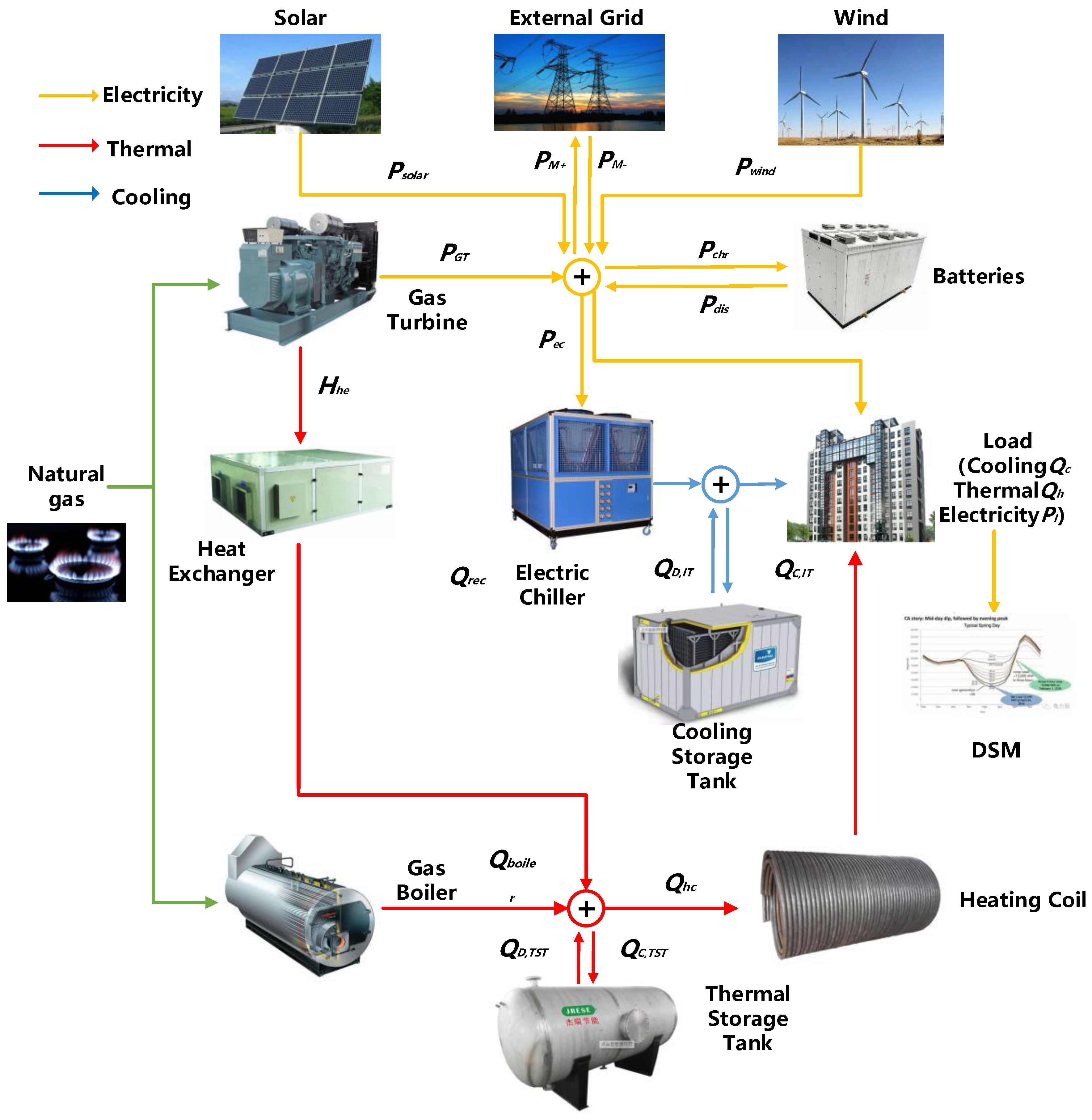
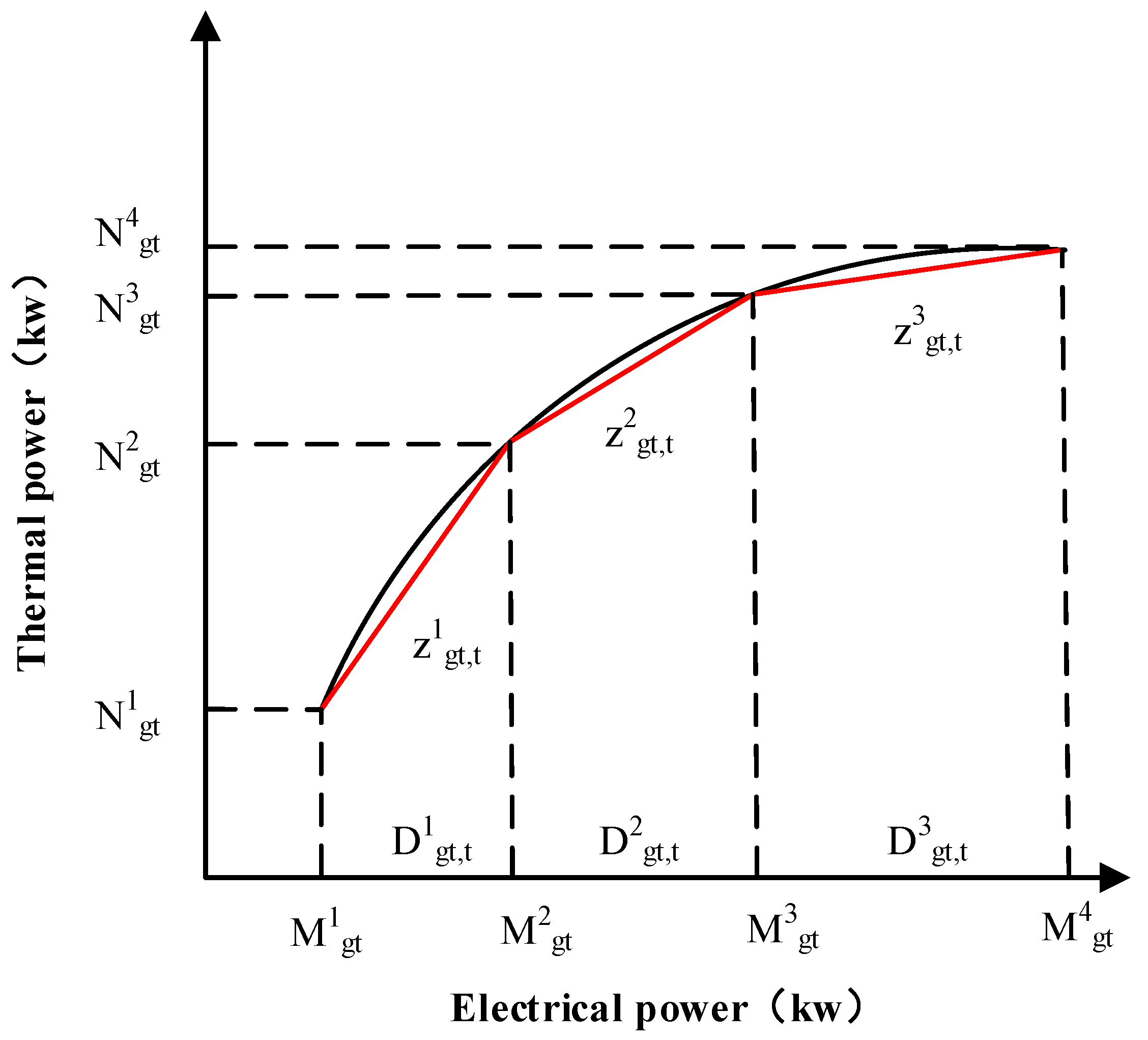
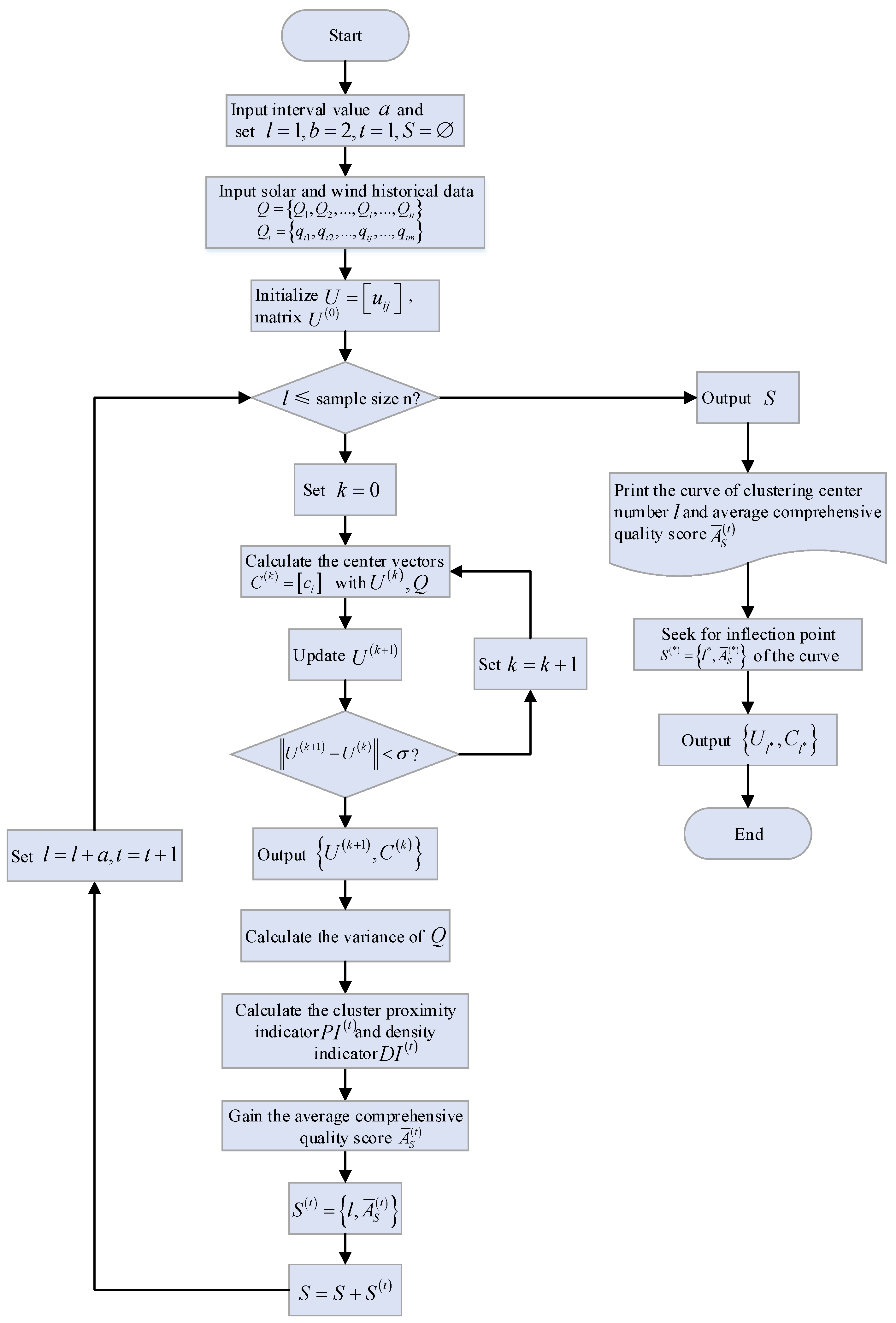
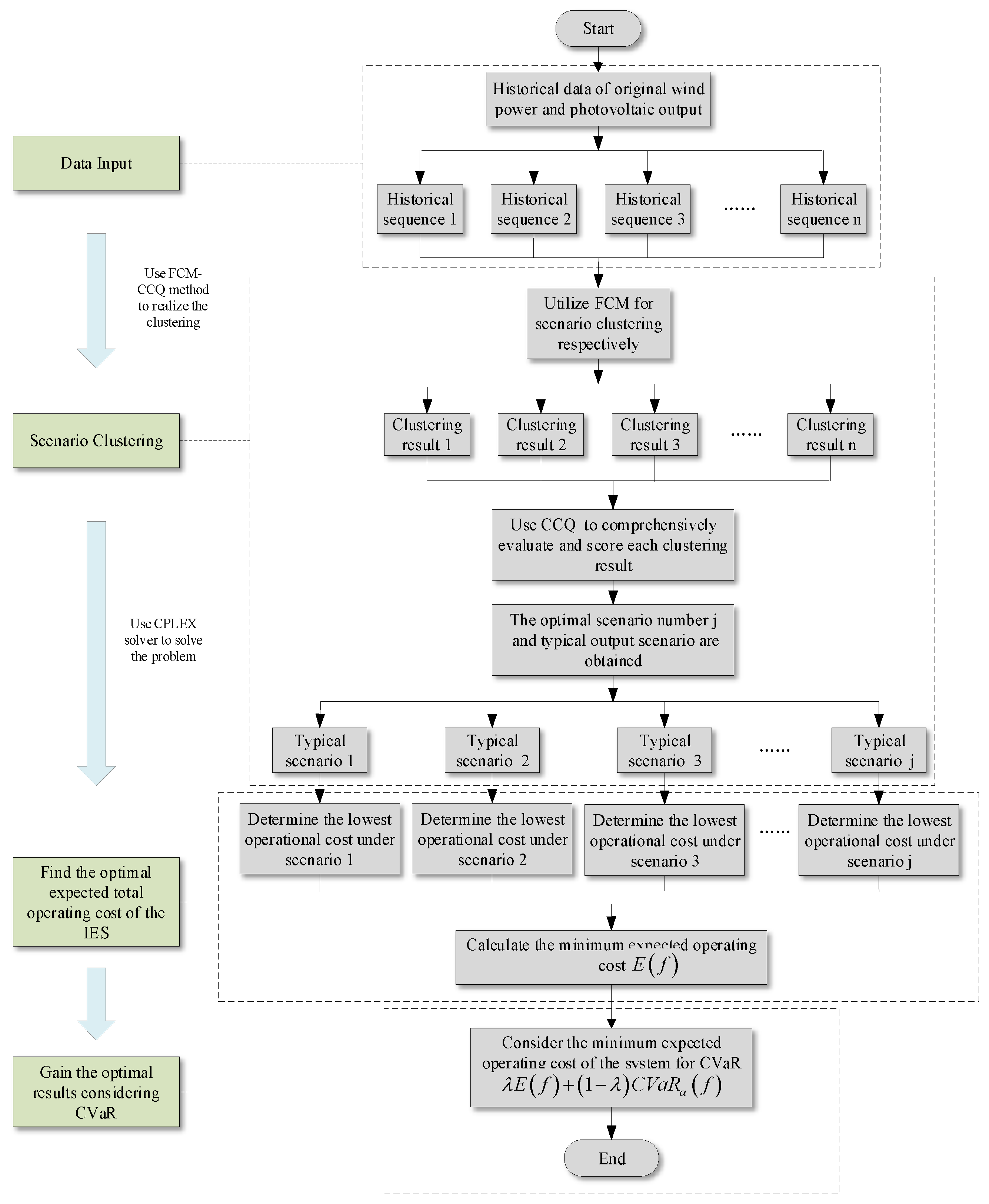
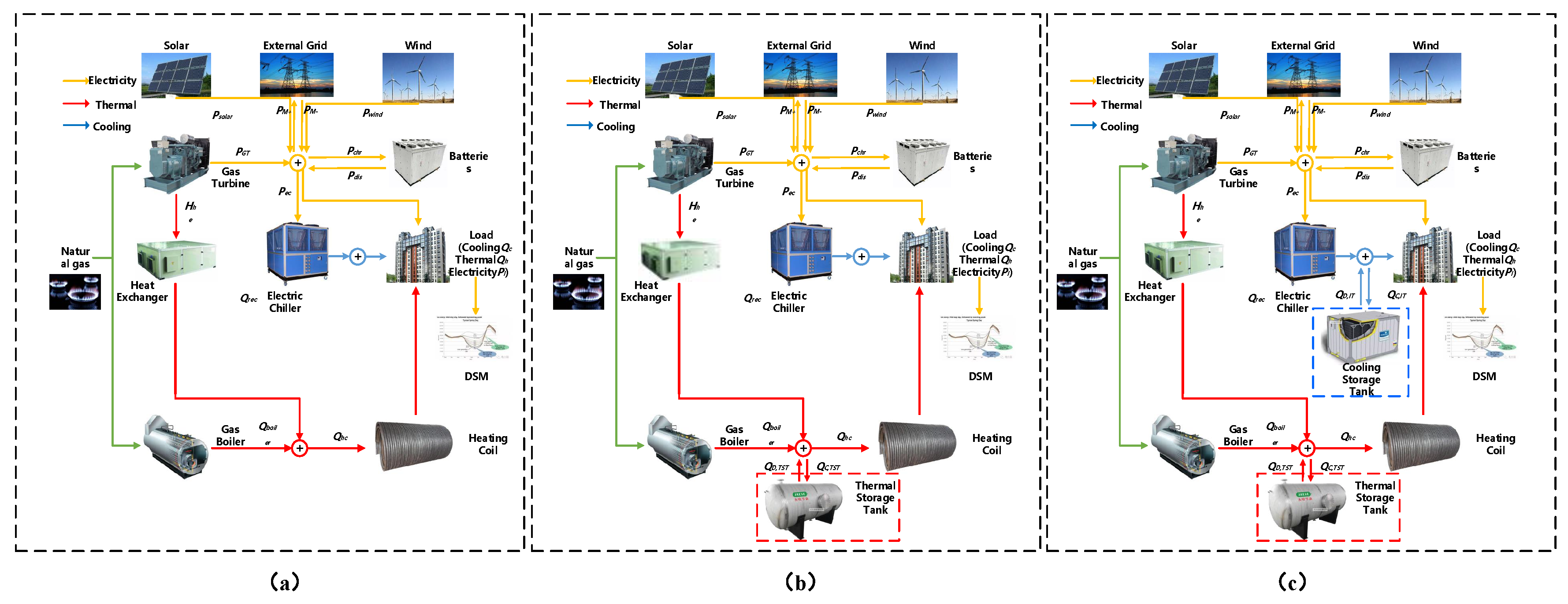

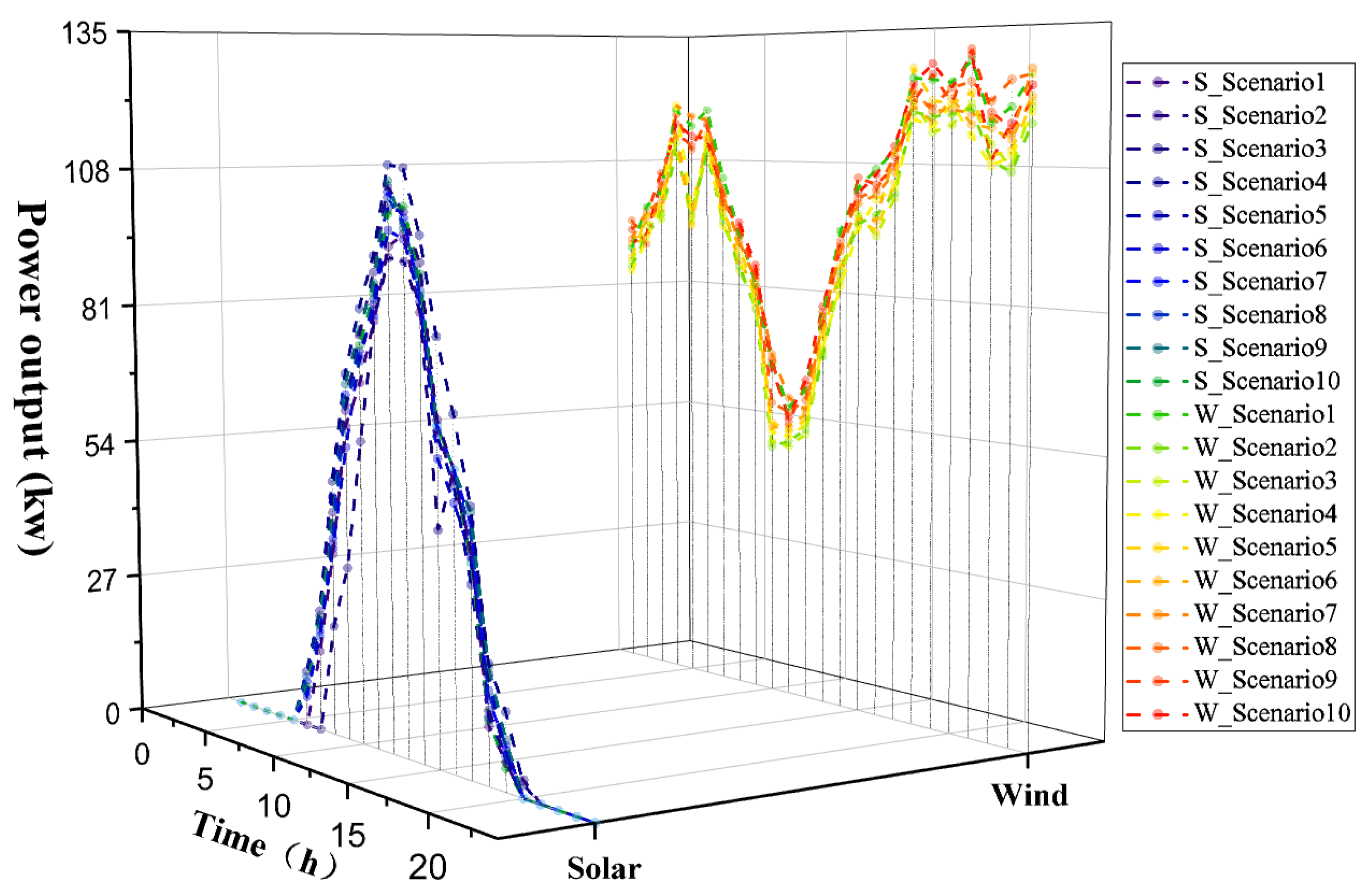
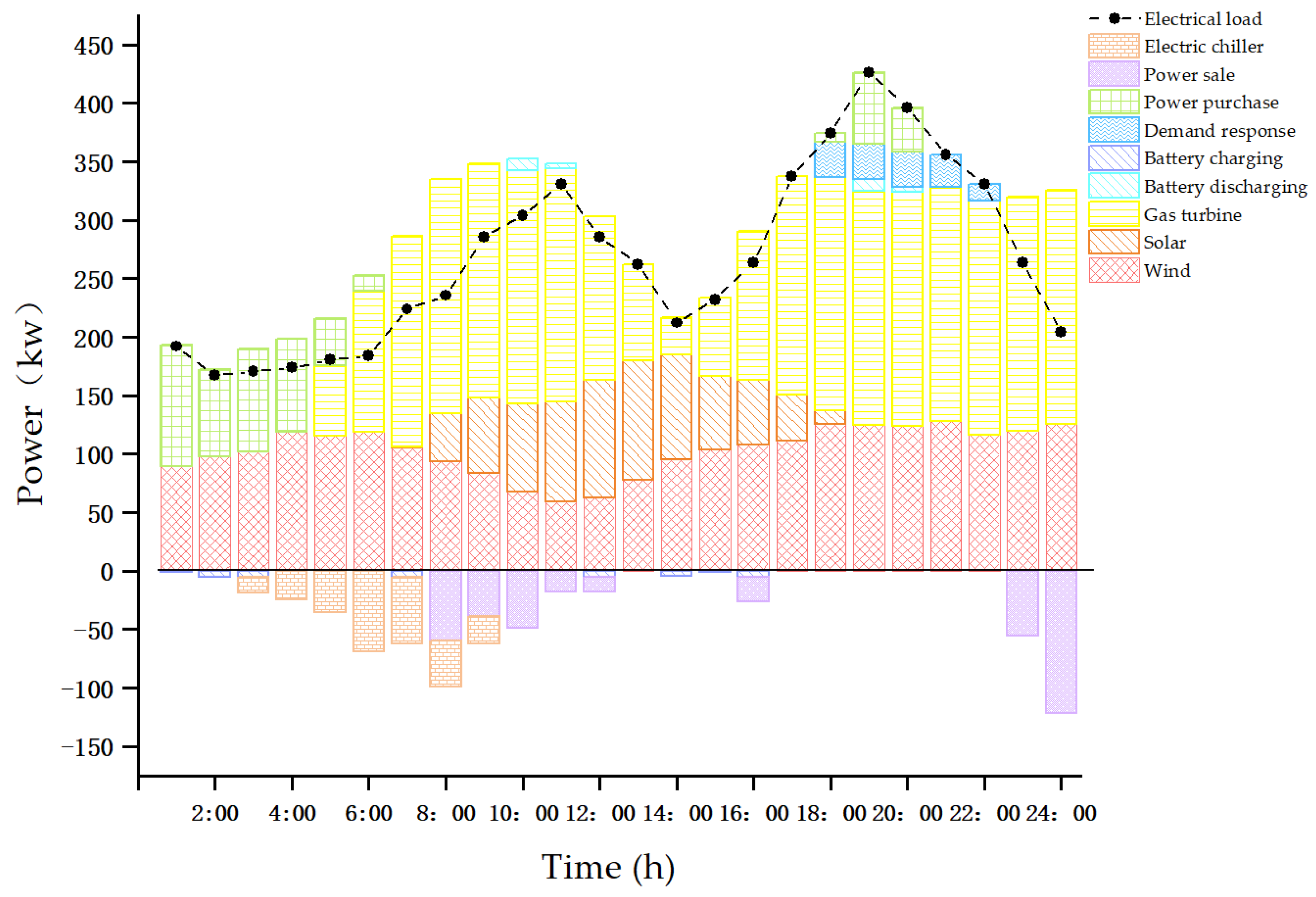
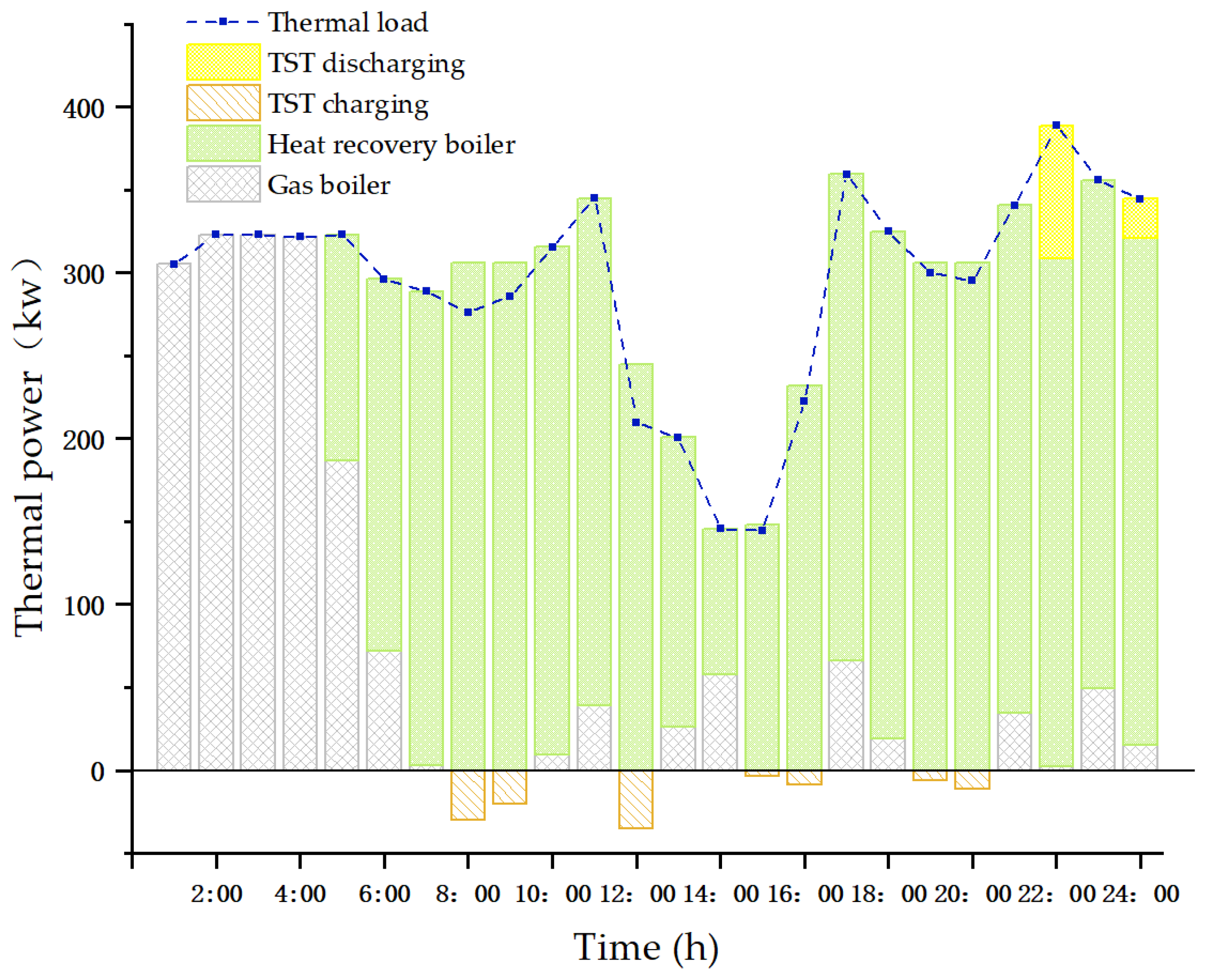
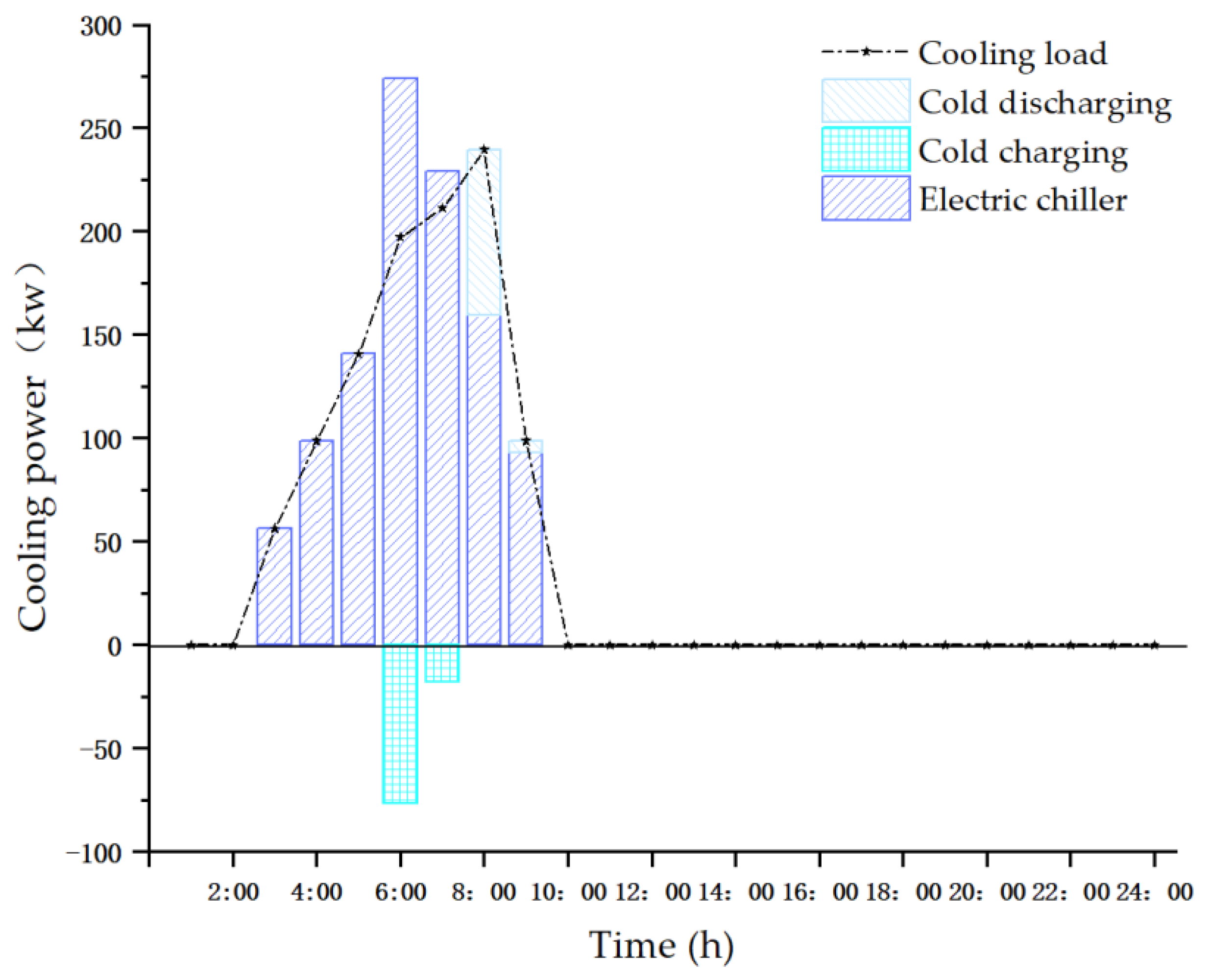
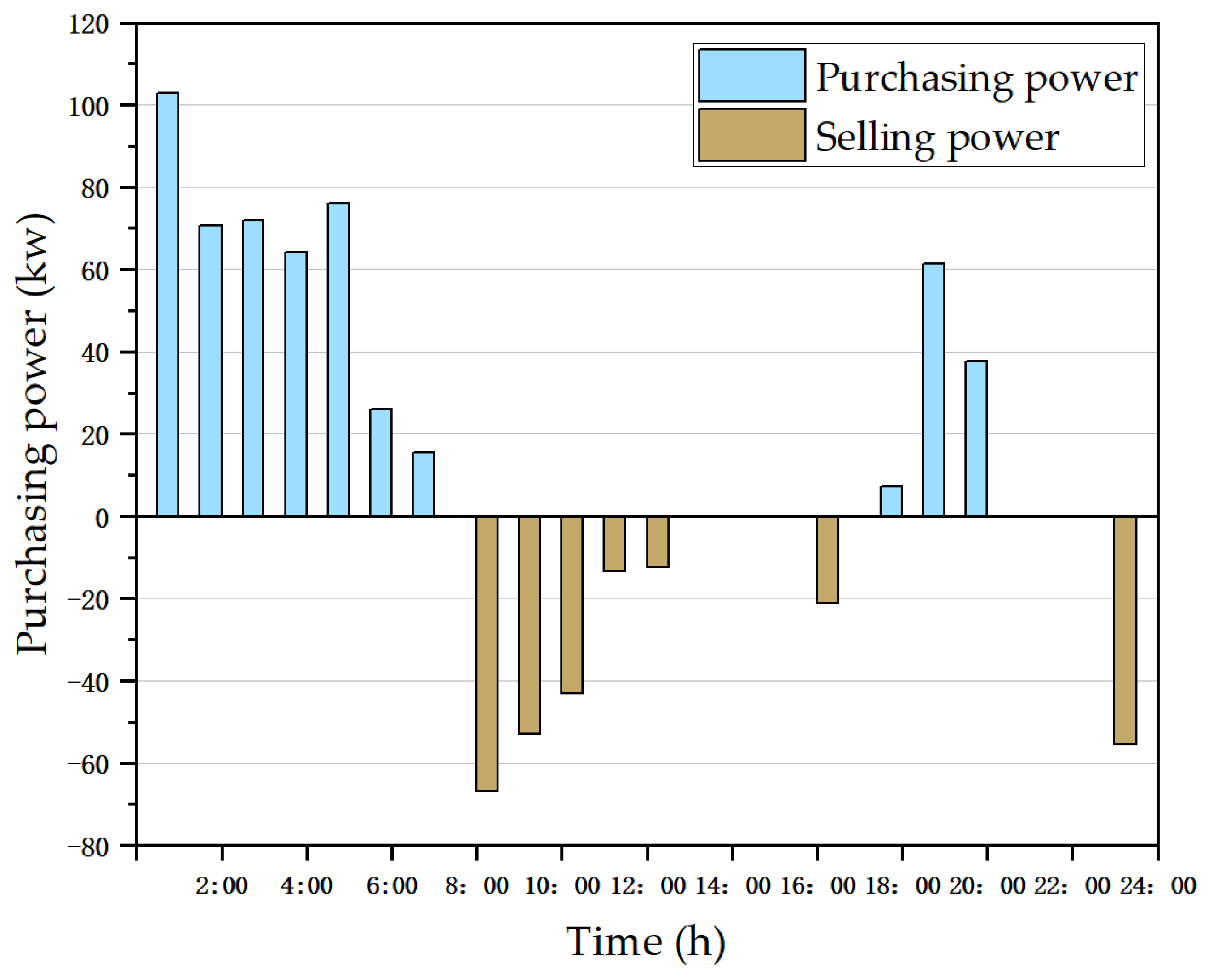
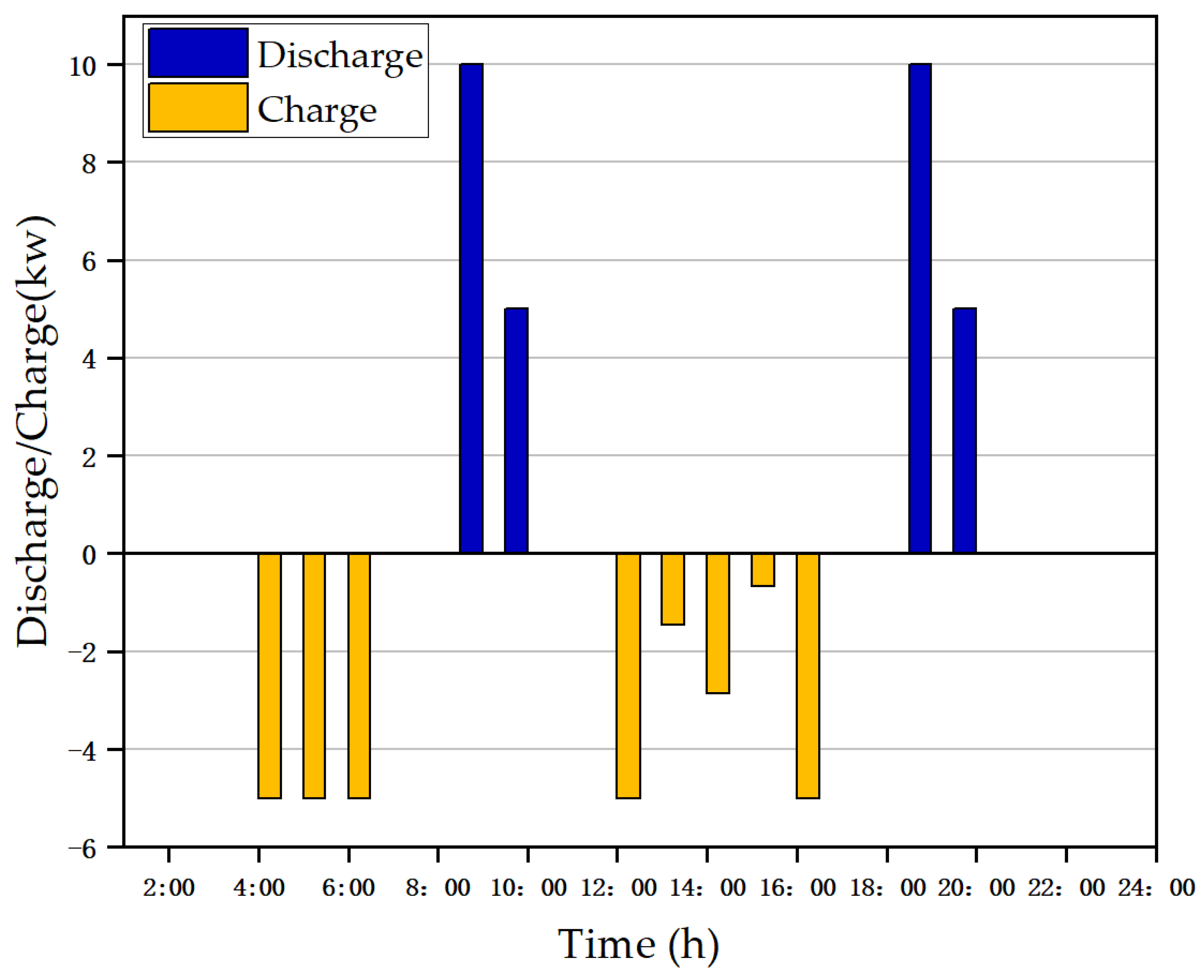
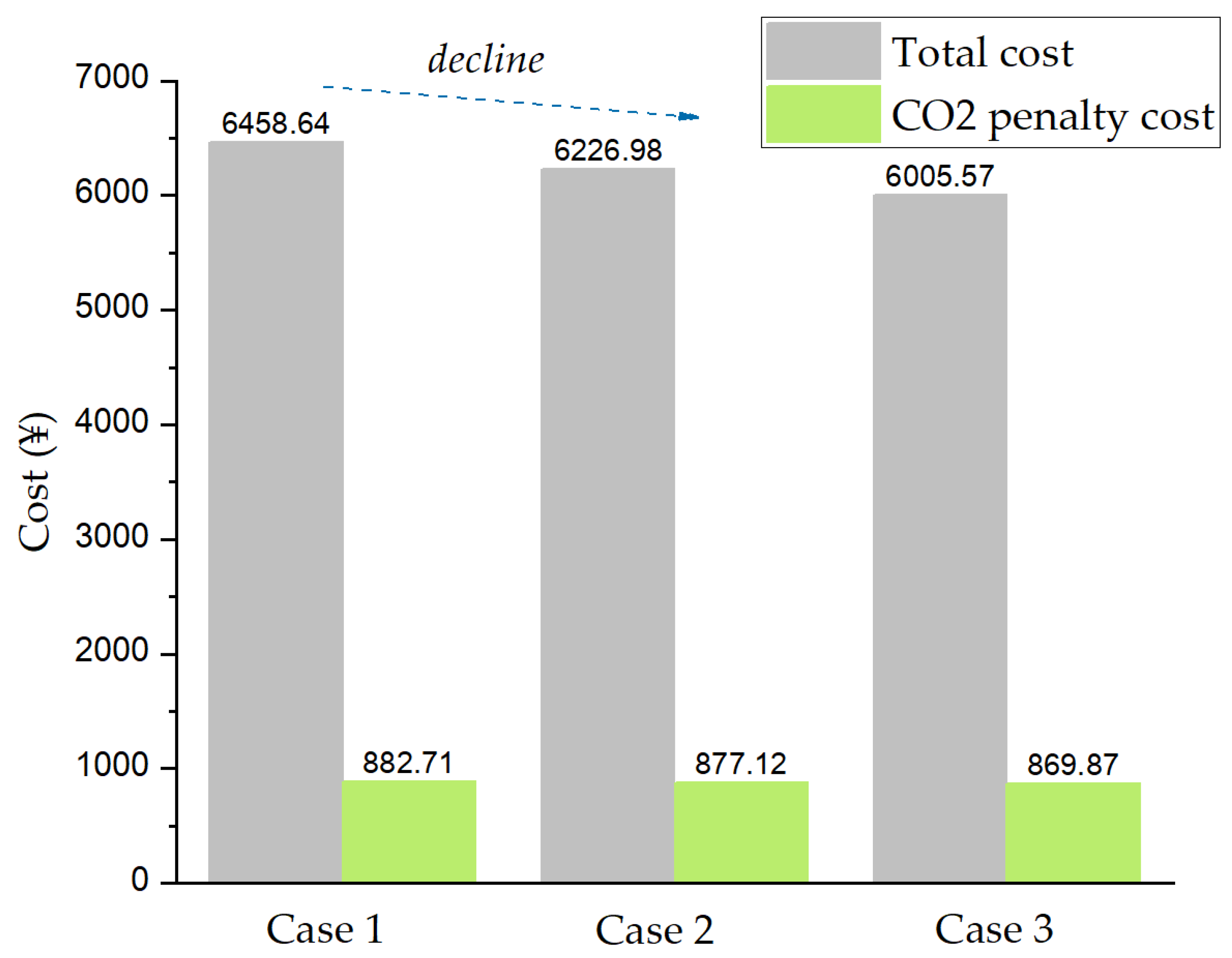
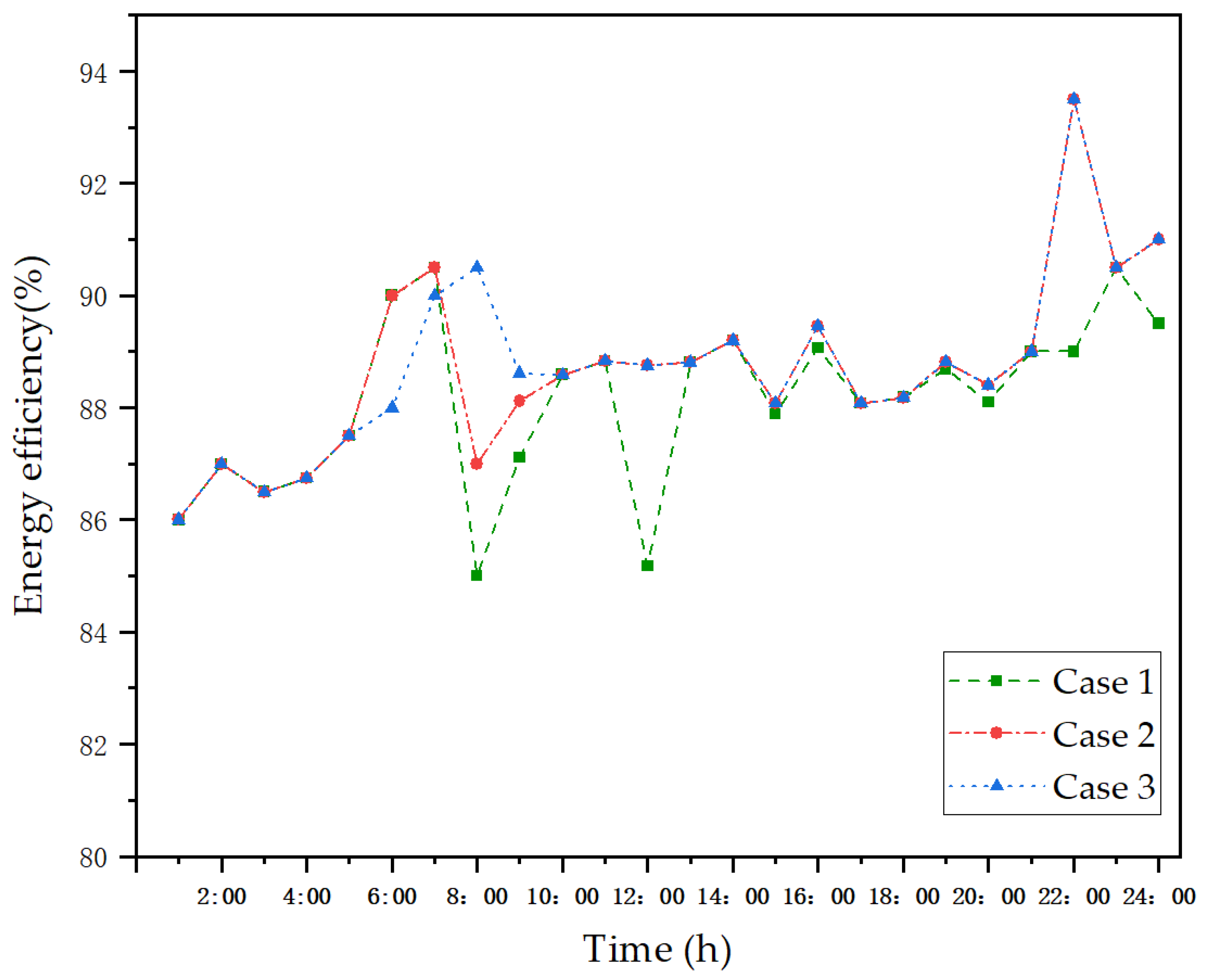

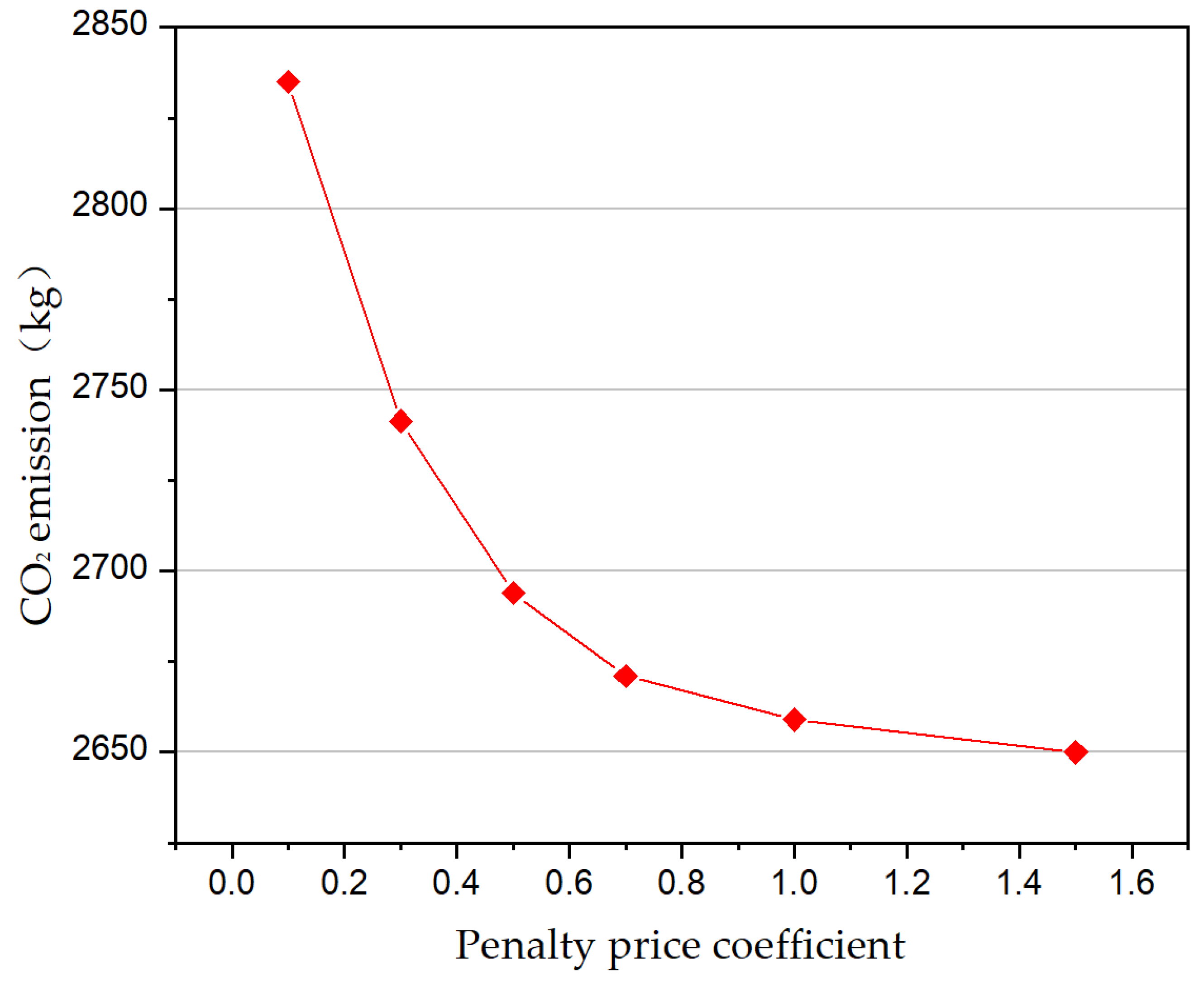
© 2019 by the authors. Licensee MDPI, Basel, Switzerland. This article is an open access article distributed under the terms and conditions of the Creative Commons Attribution (CC BY) license (http://creativecommons.org/licenses/by/4.0/).
Share and Cite
Liu, H.; Nie, S. Low Carbon Scheduling Optimization of Flexible Integrated Energy System Considering CVaR and Energy Efficiency. Sustainability 2019, 11, 5375. https://doi.org/10.3390/su11195375
Liu H, Nie S. Low Carbon Scheduling Optimization of Flexible Integrated Energy System Considering CVaR and Energy Efficiency. Sustainability. 2019; 11(19):5375. https://doi.org/10.3390/su11195375
Chicago/Turabian StyleLiu, Hang, and Shilin Nie. 2019. "Low Carbon Scheduling Optimization of Flexible Integrated Energy System Considering CVaR and Energy Efficiency" Sustainability 11, no. 19: 5375. https://doi.org/10.3390/su11195375
APA StyleLiu, H., & Nie, S. (2019). Low Carbon Scheduling Optimization of Flexible Integrated Energy System Considering CVaR and Energy Efficiency. Sustainability, 11(19), 5375. https://doi.org/10.3390/su11195375




